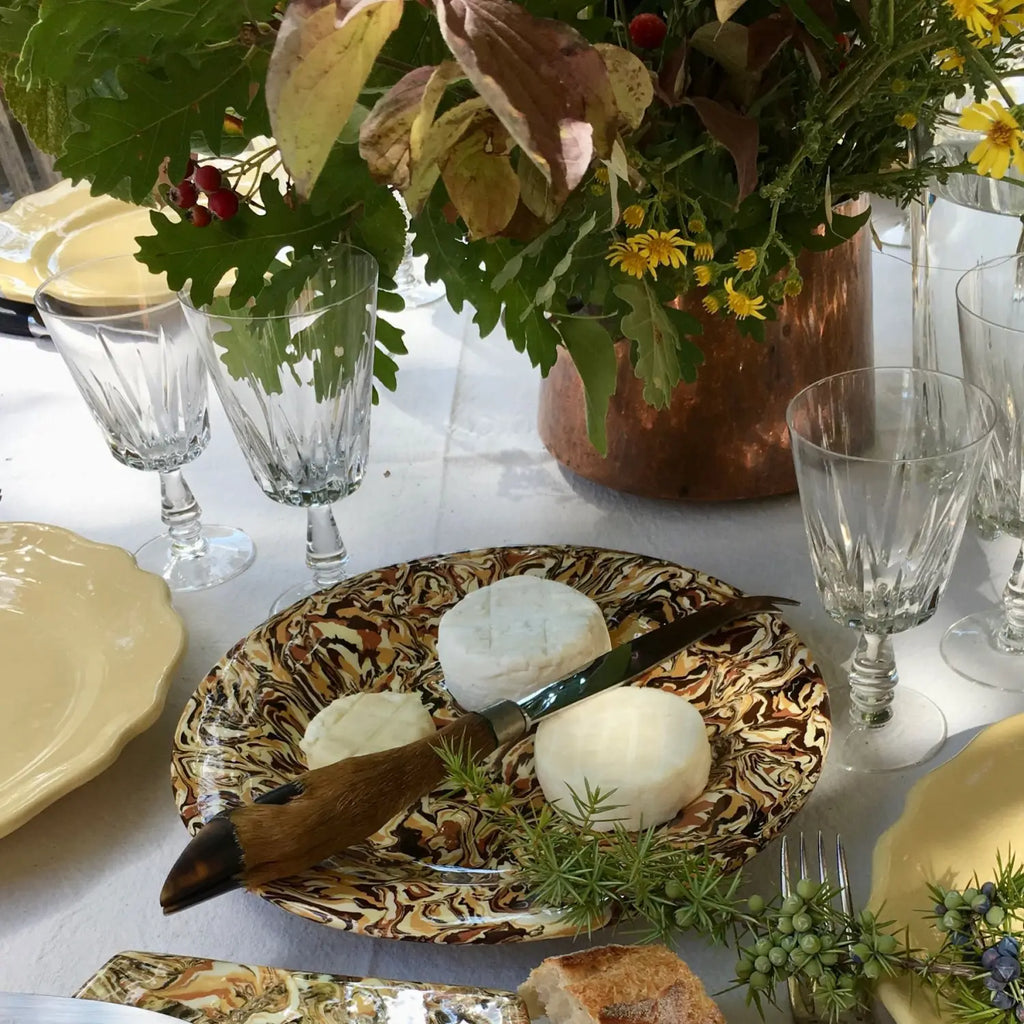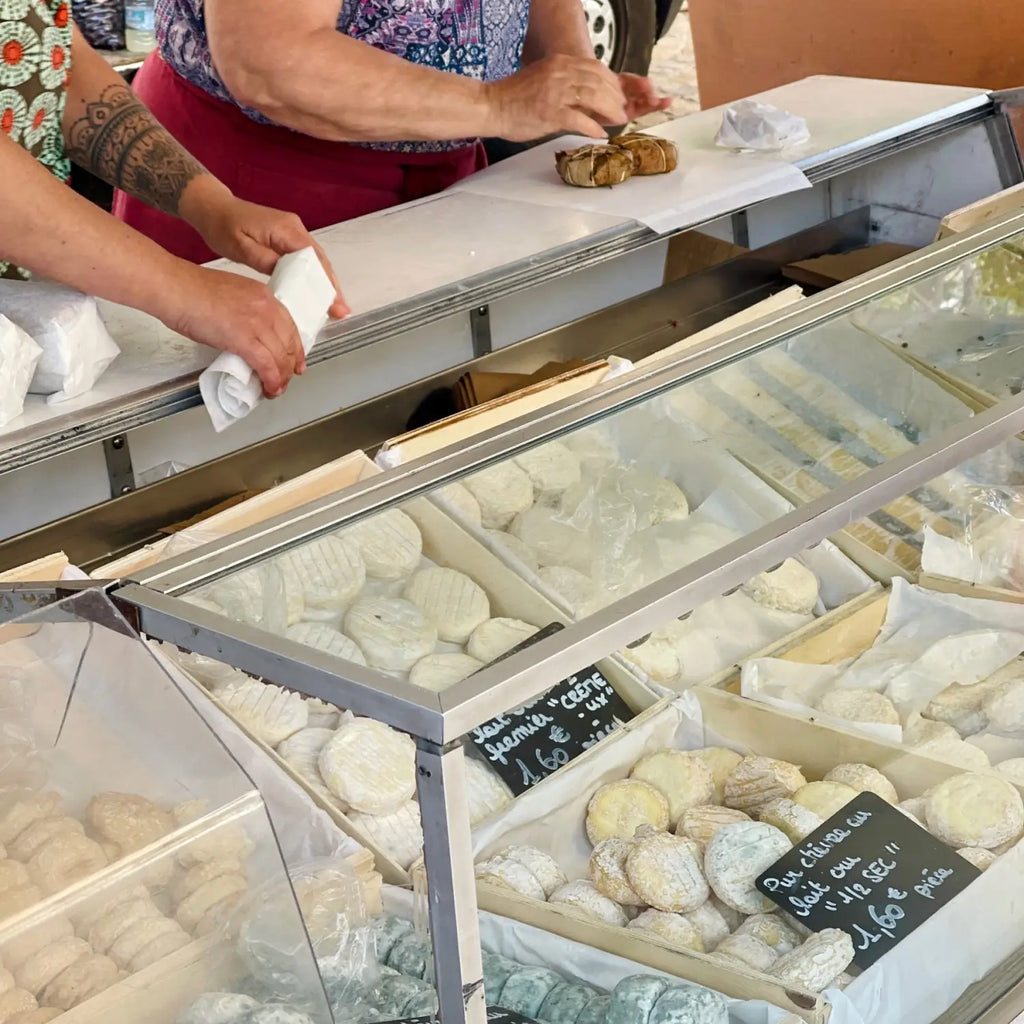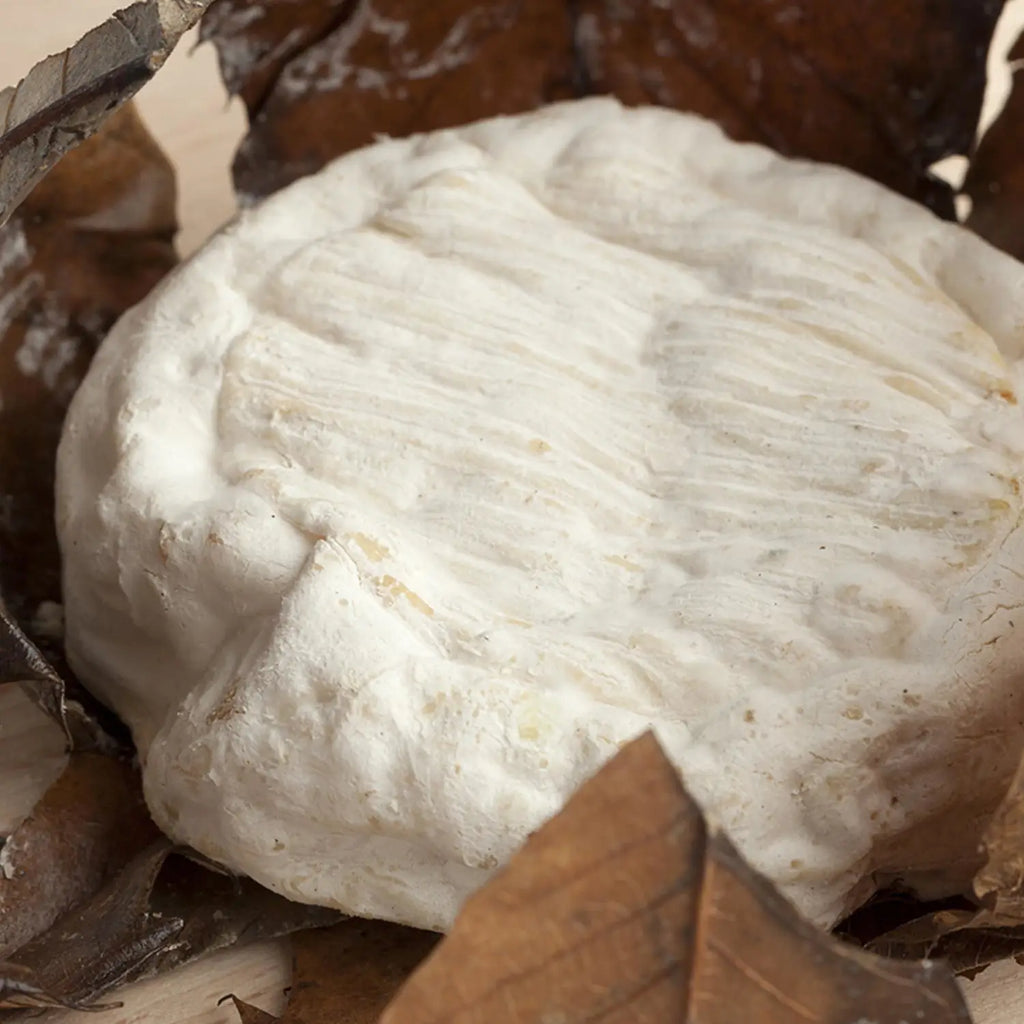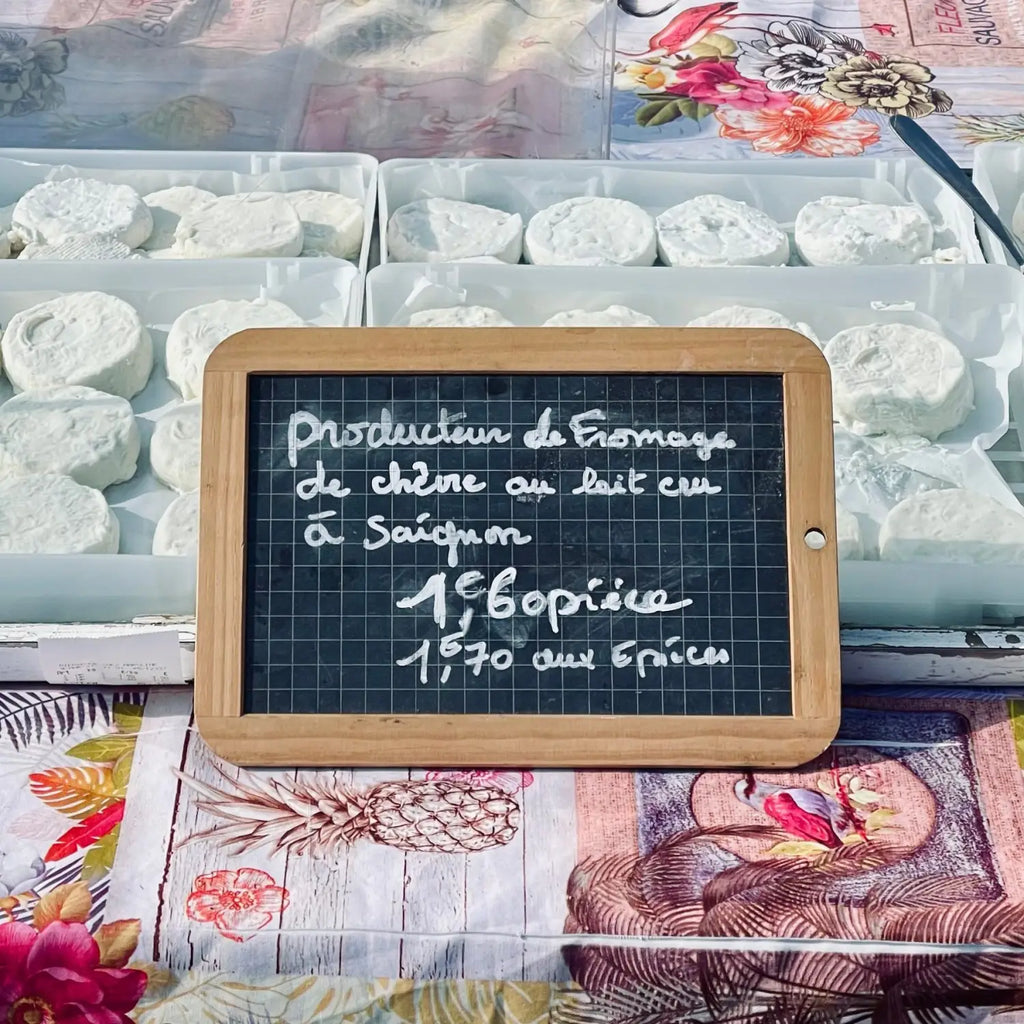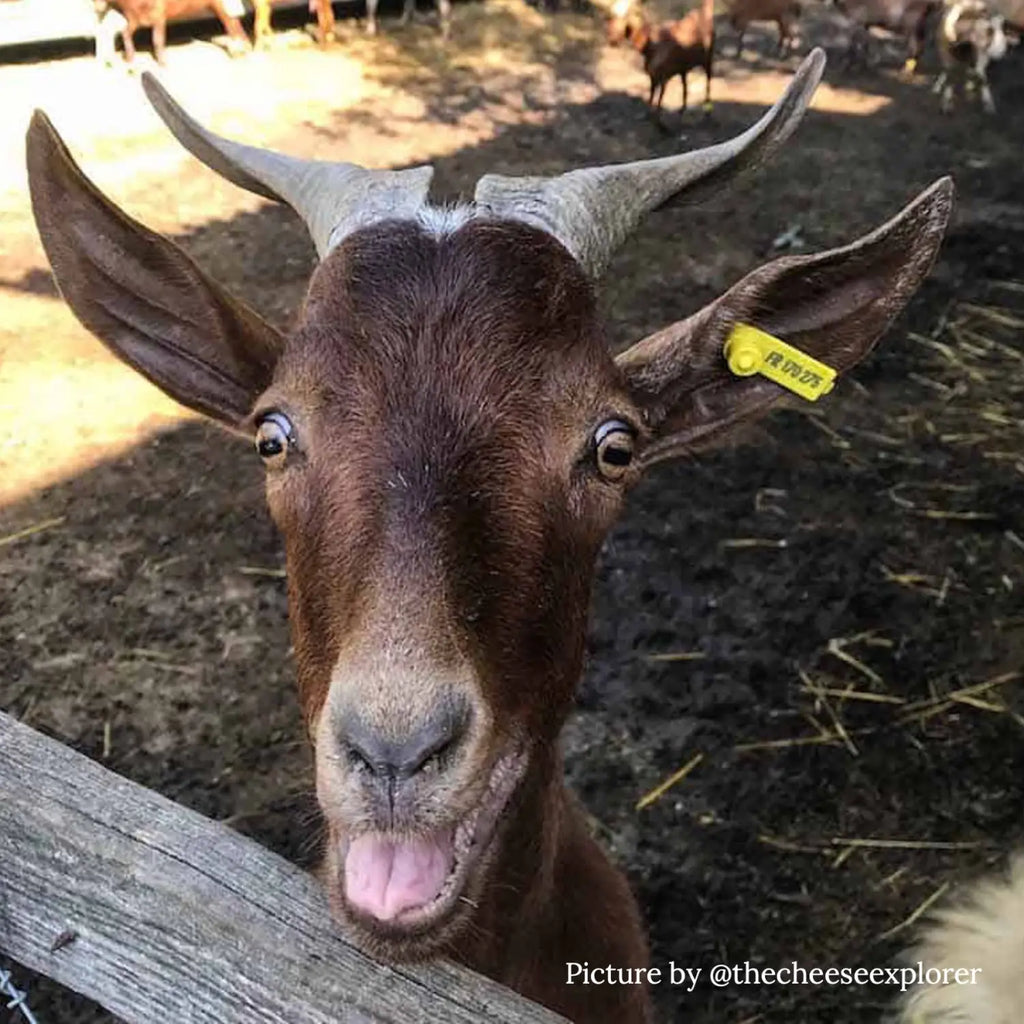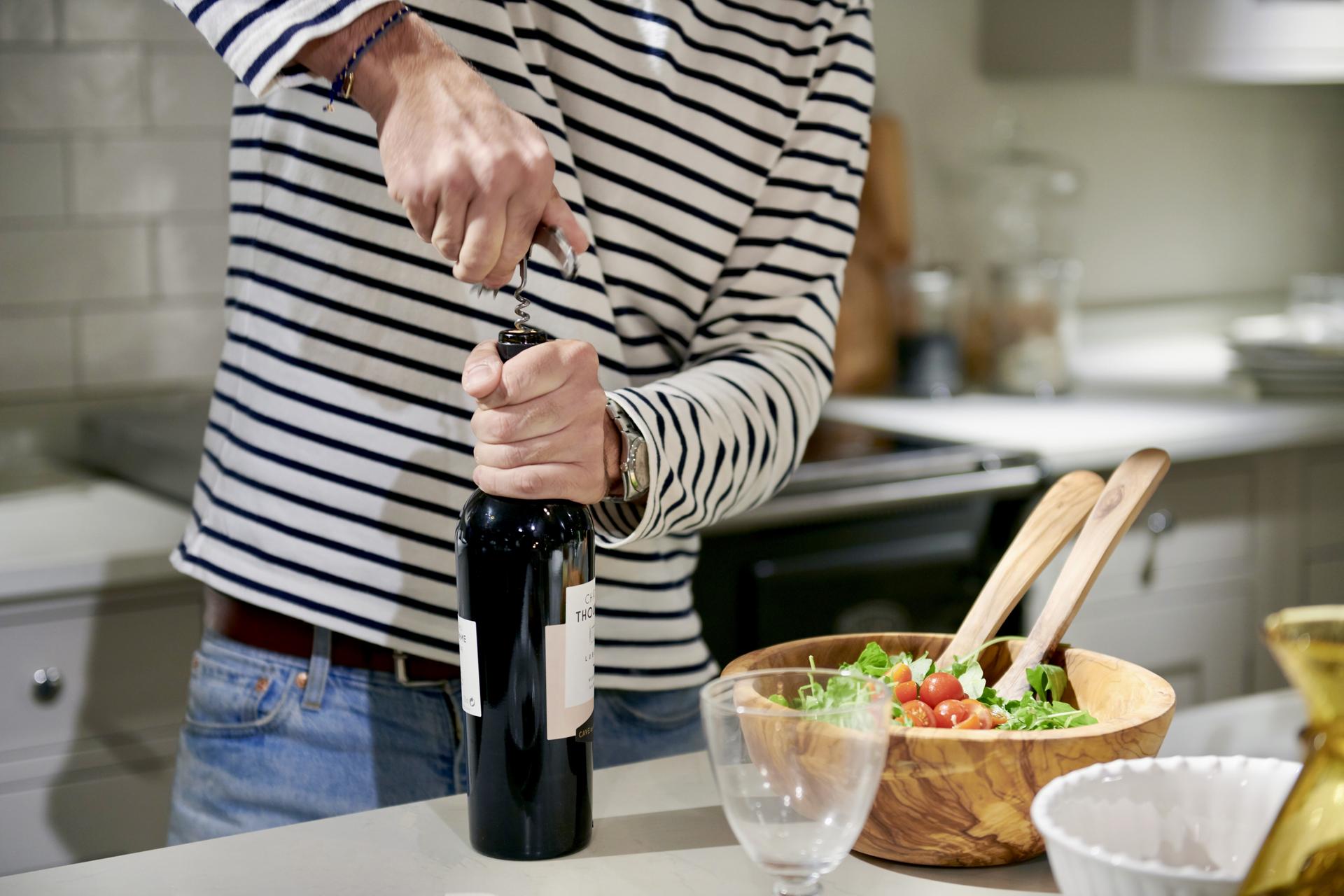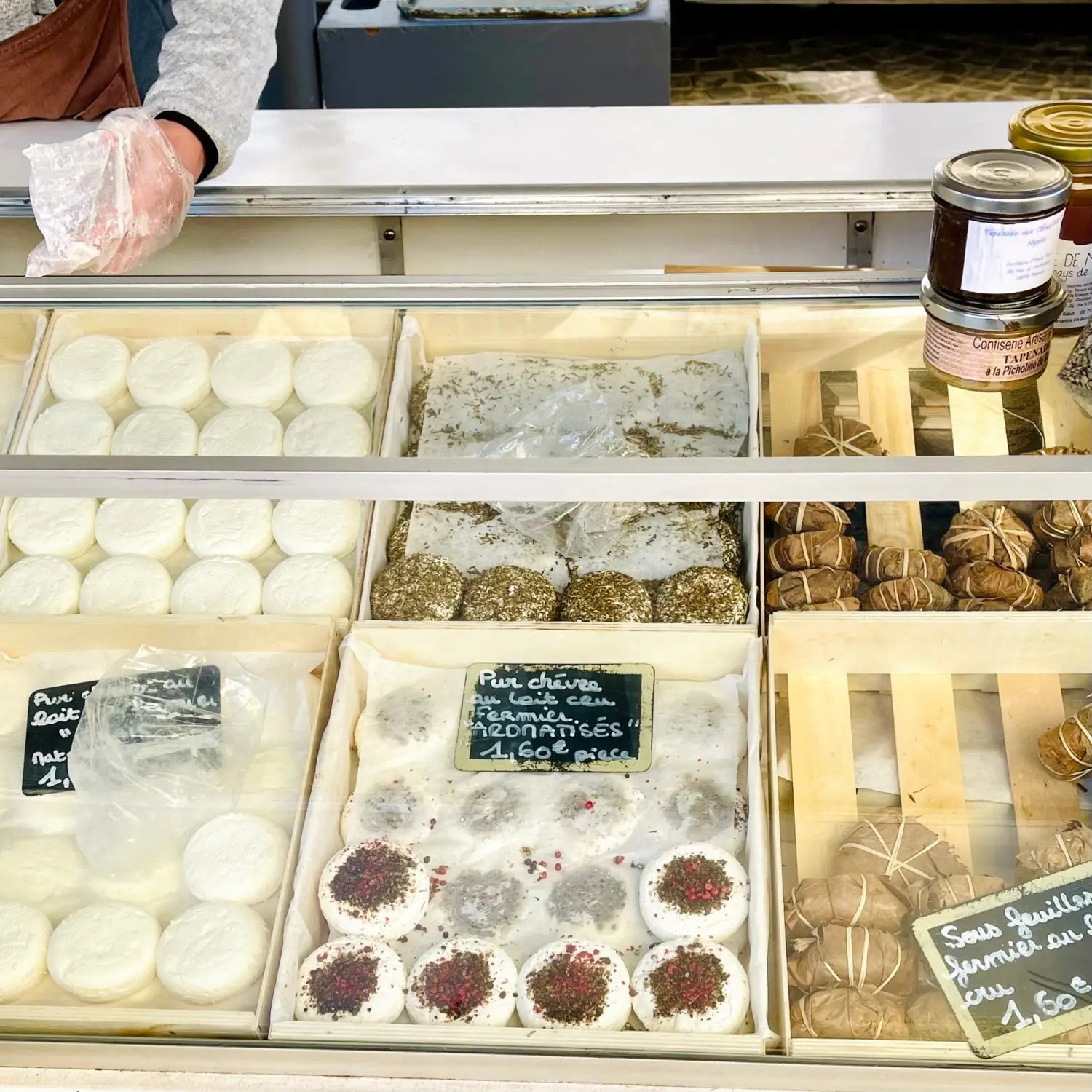
The GOAT of cheeses
Our family, like many, has a passionate love affair with cheese. I grew up eating cheese at most meals and would happily eat cheese at any time of day. At lunchtime, even our primary school canteen gave children an individual prepacked slice of President camembert alongside with a starter, a main and a dessert. Eating cheese is part of our education. Speaking of school meals in France, did you know that wine was served to children at lunchtime until 1956? And pupils were encouraged to drink! How mad is that?!
Back to our cheese. Growing up, I loved eating mild cheeses, often generic and available at supermarkets. Upon reaching adolescence, I started to like more artisan and local cheeses, often with a more distinctive taste. I shifted away from mass-produced cheese, and not just because my palate changed. When meeting my friends or shopping with my family at the weekly market in Apt (our hometown) every Saturday, I realised the huge variety of local cheeses made by producers on our doorstep. I wanted to support that, and that was easy because their cheeses were incredible. And it’s when I became an adult that my love for cheese reached its current all-time high. Drinking red wine at the table added another dimension to my “assiettes de fromages”; it also made me love our family lunches and dinners even more. The family would often spend a solid hour eating cheese with fresh bread and drinking red wine, always before dessert (and not after). It sometimes felt like it was the best part of the meal, for the cheese, bien-sûr, but also because it was at that point of the meal that we would tell eachother our best stories!
Now, let’s talk a bit more about our local cheeses in Provence. Here, almost all cheeses are made using local goat’s milk. Goat’s cheeses have been a local produce here since Roman times. Some are fresh and light, whilst others are cured and intense. There’s a wide range of goat’s cheeses which vary by the producers, the production and affinage process, the time of year, the goat’s breed, the food the goats feed on, how long the cheeses are matured, what they are seasoned with... the list is rather long!
The most well-known cheese from the Luberon is undoubtedly the Banon, and it's one of our favourites. Banon is a small village in Haute-Provence and home to the famous cheese – and there are a few other producers in neighbouring villages. The cheese was granted a AOC label in 2003, which now certifies its geographical origin with the same label you find in wines. The Banon is a small circular goat’s cheese, wrapped in chestnut leaves. Historically, it was produced in autumn and wrapped so it could last all winter. The producers kept that tradition. Note: the cheese never lasts that long at our family home! The Banon is made with unpasteurized milk from a local breed of goat ("Commune Provençale"). It is moulded with a ladle, undergoes two turns, then is pre-ripened for a few days before being wrapped in the leaves. It has a strong smell, but its texture is still quite creamy and it has a rich, earthy, nutty taste which comes from the chestnut leaves. We love Banon with a fresh sourdough baguette and a bottle of Ventoux red. Our Luminense AOP Ventoux red would be the perfect match! There are a few retailers in the UK who sell Banon cheese. We’d recommend buying yours from The Fine Cheese Co.
A little further south of the Luberon mountain, is the home of Brousse du Rove. Rove is a little town not far from Marseille and it is also the name of the breed of goat. Rove goats thrive in the arid and rocky mountains of the south of Provence. Unlike the goats from northern Provence, they don’t produce much milk. Because of their low yield, their cheese is rich in fat and low in whey. The cheese is sold fresh in little funnel-shaped containers. The taste of Rove cheese is fresh and mellow, with hints of Provence herbs coming from the goat’s food and a saline finish coming from the nearby Med’. There are now under 10 producers remaining and the cheese is also protected by a AOC label like the Banon. We love eating Brousse de Rove by the spoonful from a dessert bowl with a drizzle of lavender honey and a glass of Noix de Saint-Jean walnut wine. You’ll find it almost impossible to find any Brousse de Rove in the UK, as it must be sold within 8 days of production!
The Banon and the Brousse du Rove are two of the Provence cheeses you must know about and try at least once. There are some amazing small cheese producers in the region. We particularly love the producers from the Haute-Provence (near Banon). When you get a chance to visit our region, your best chance to try delicious local cheese is to shop from the weekly farmers' markets. Almost every village or town has one and there’s one somewhere every day of the week. Whenever possible, go to producers’ markets – rather than artisan markets - where you know that the produce sold is made or grown within a few miles of where you stand. Our favourite markets near our hometown are: Forcalquier (every Monday), Apt producers’ market (every Tuesday), Banon (every Tuesday), Sault (every wednesday), Apt (every Saturday) and Coustellet producers’ market (every Sunday from April until October).
If you are on Instagram, please follow our friend and professional cheese expert Emma Young aka @thecheeseexplorer. We met Emma whilst judging at the Great Taste Awards last year. Her account is fun, the images from her cheese travels are incredible, and her knowledge of cheese is simply unrivalled.
We’d love to have the logistics in place to sell cheese on Tariette.com but it is an immense challenge. Maybe we’ll start when we open our own shop one day! In the meantime, you can still enjoy our selection of wines and chutneys. Our favourite is the Griotte Cherry chutney, perfect with strong cheese, and best served if you treat yourself to a stunning olive wood cheese board and cheese knife!
